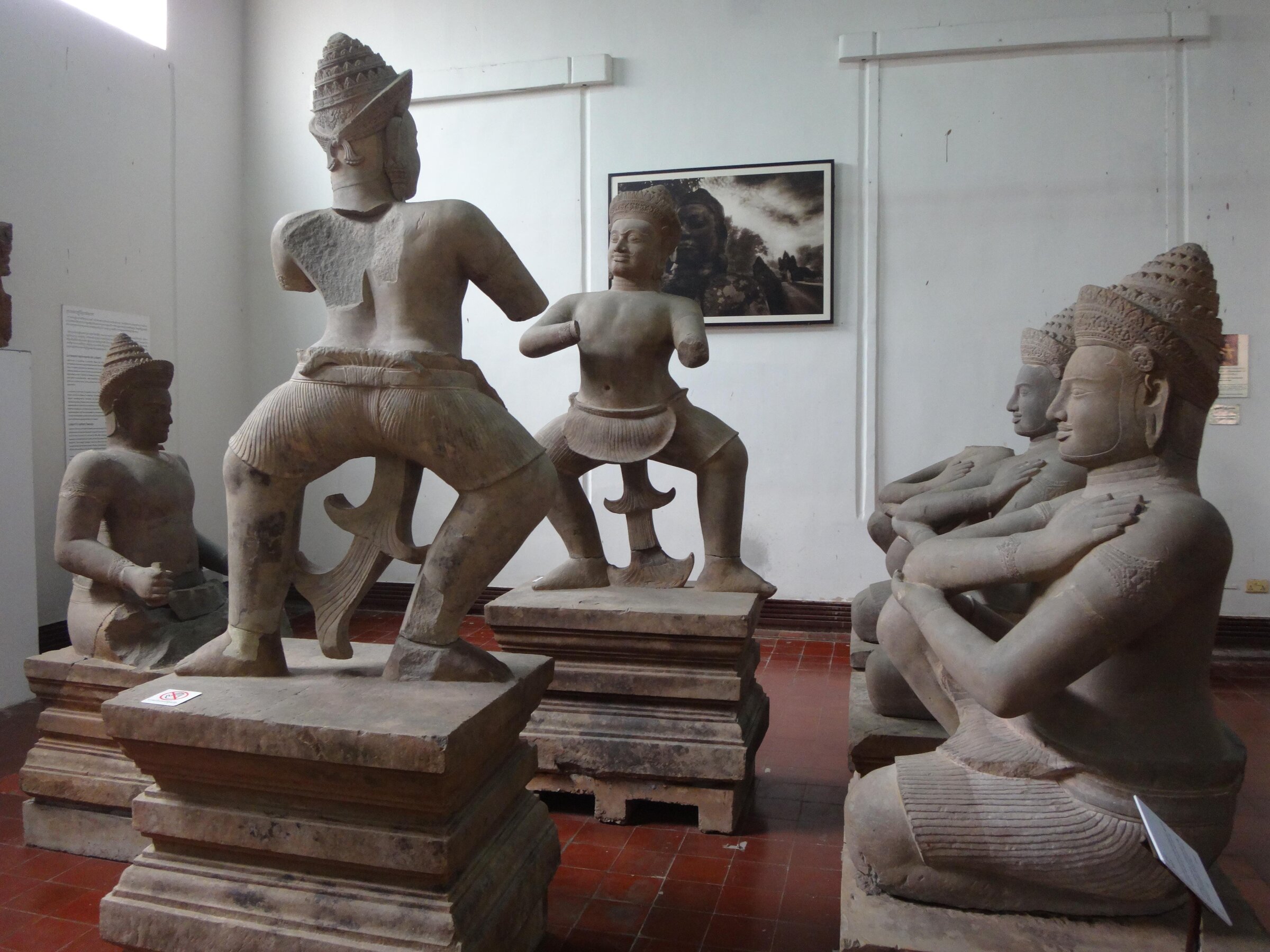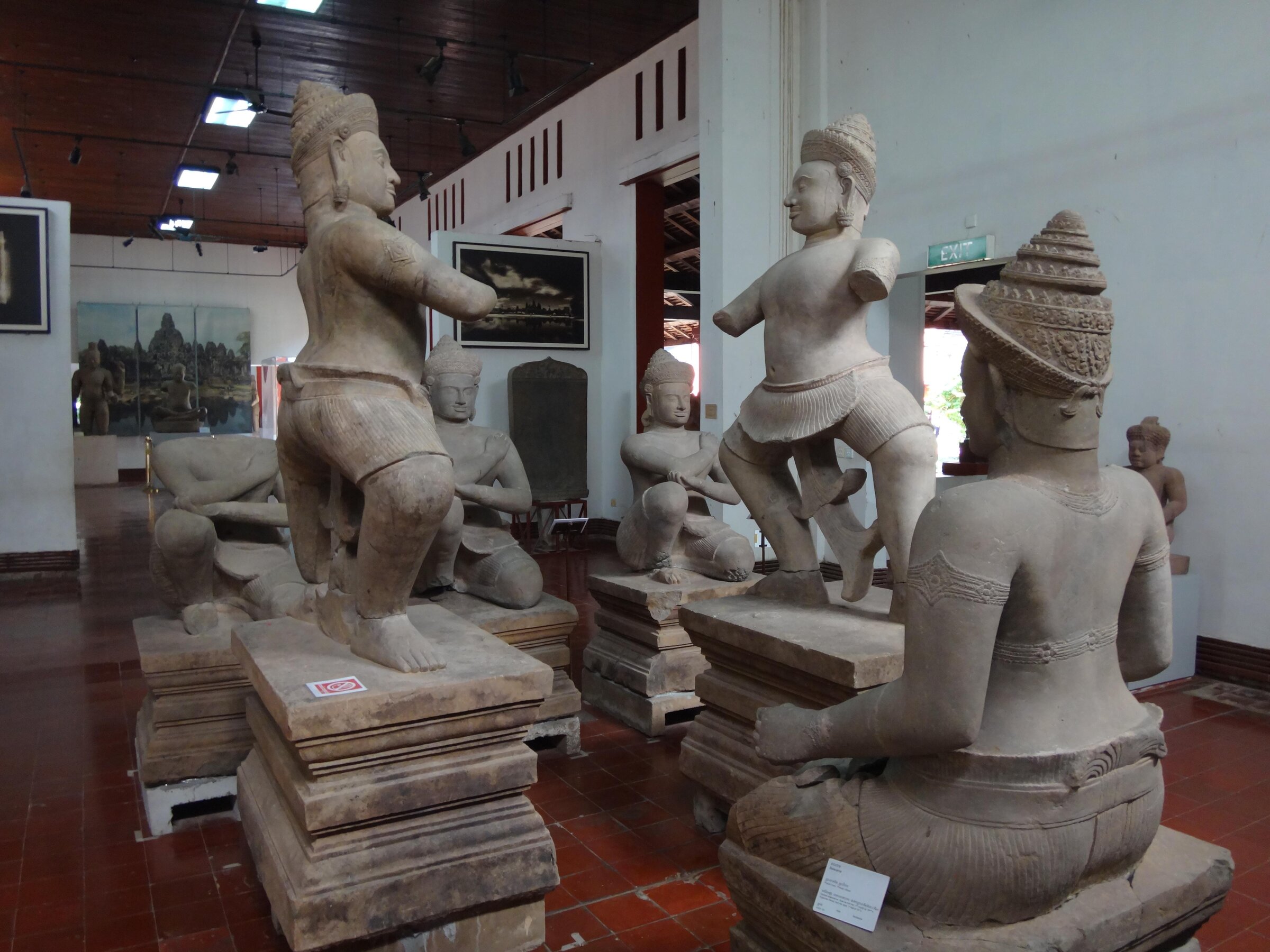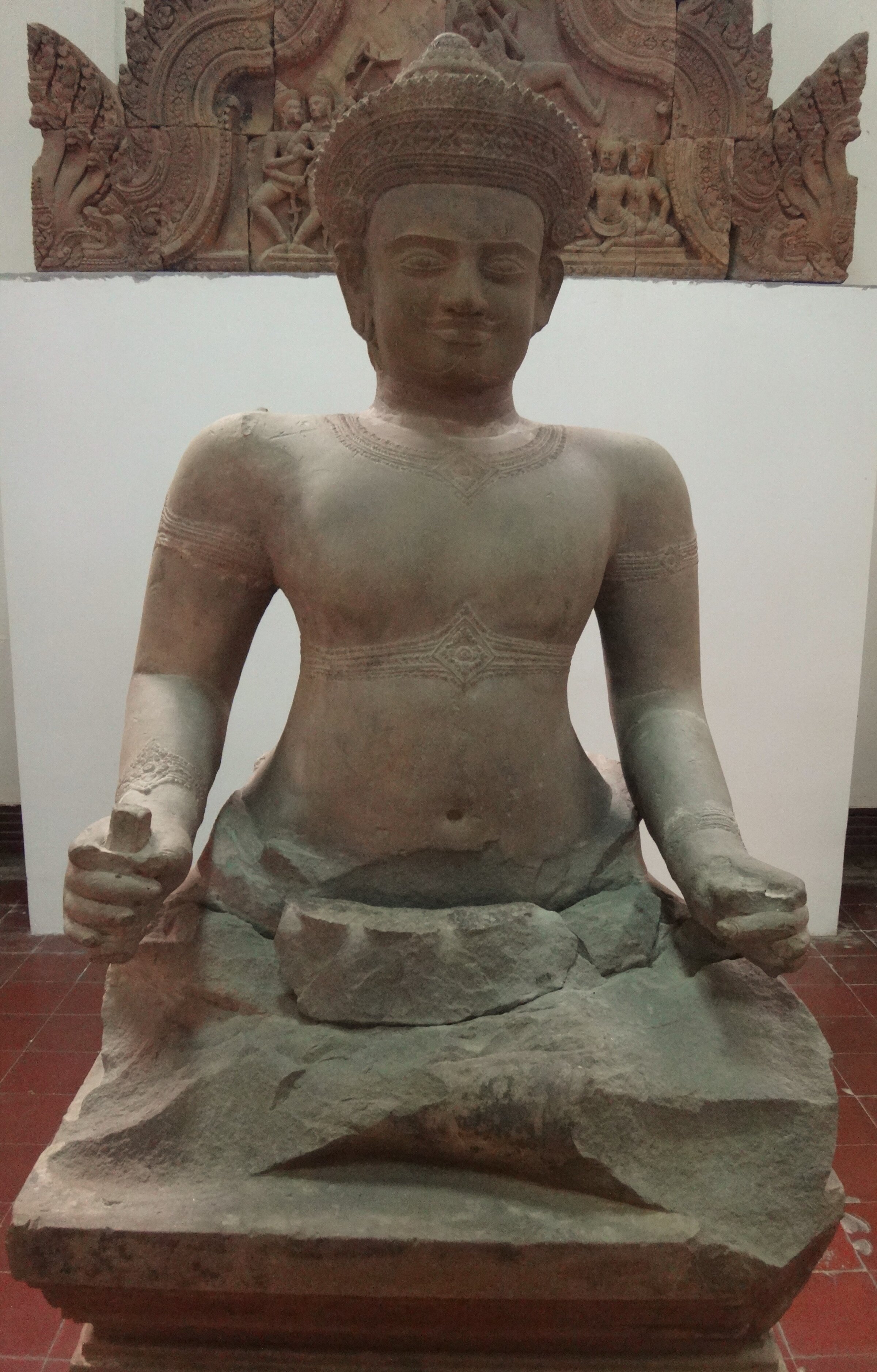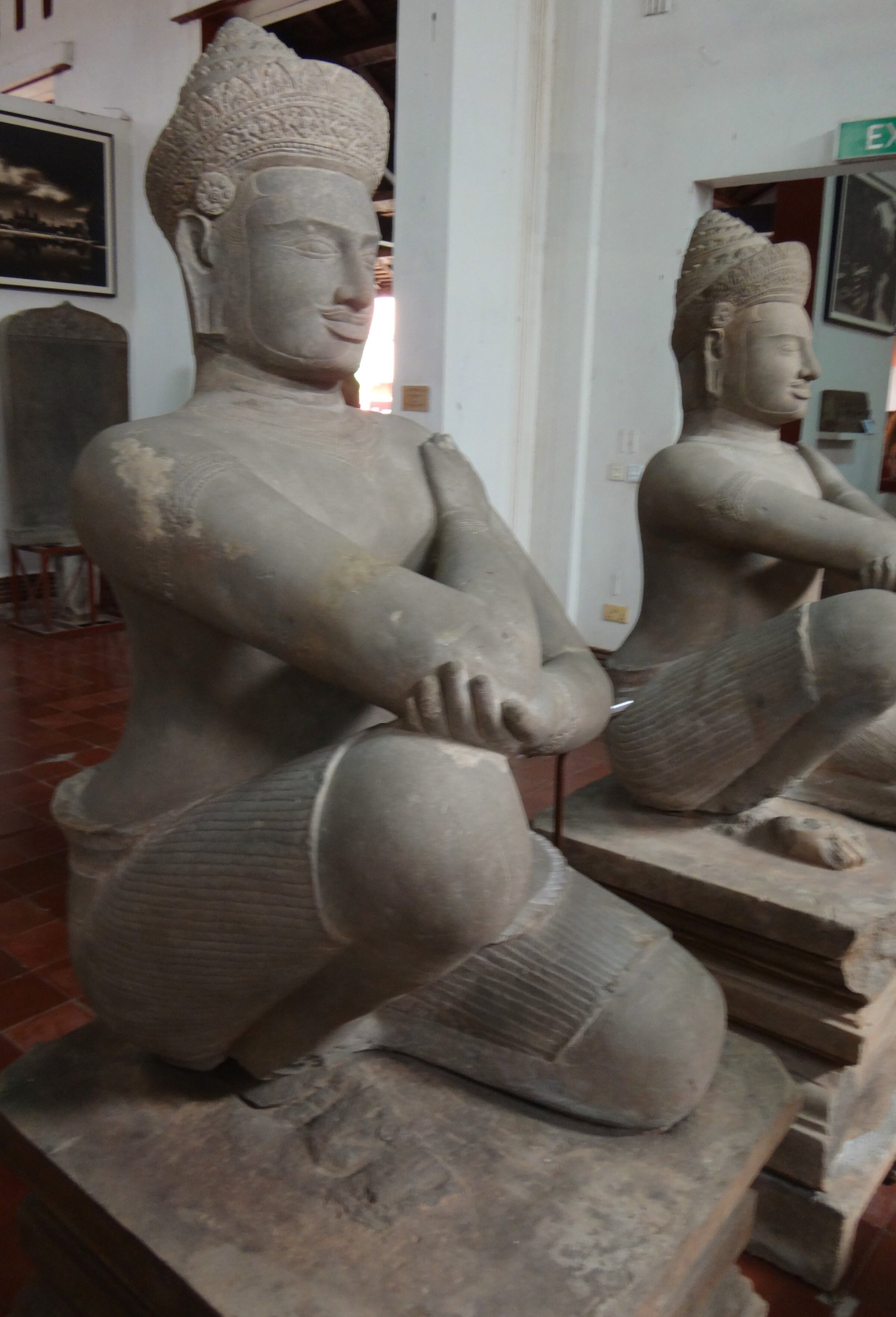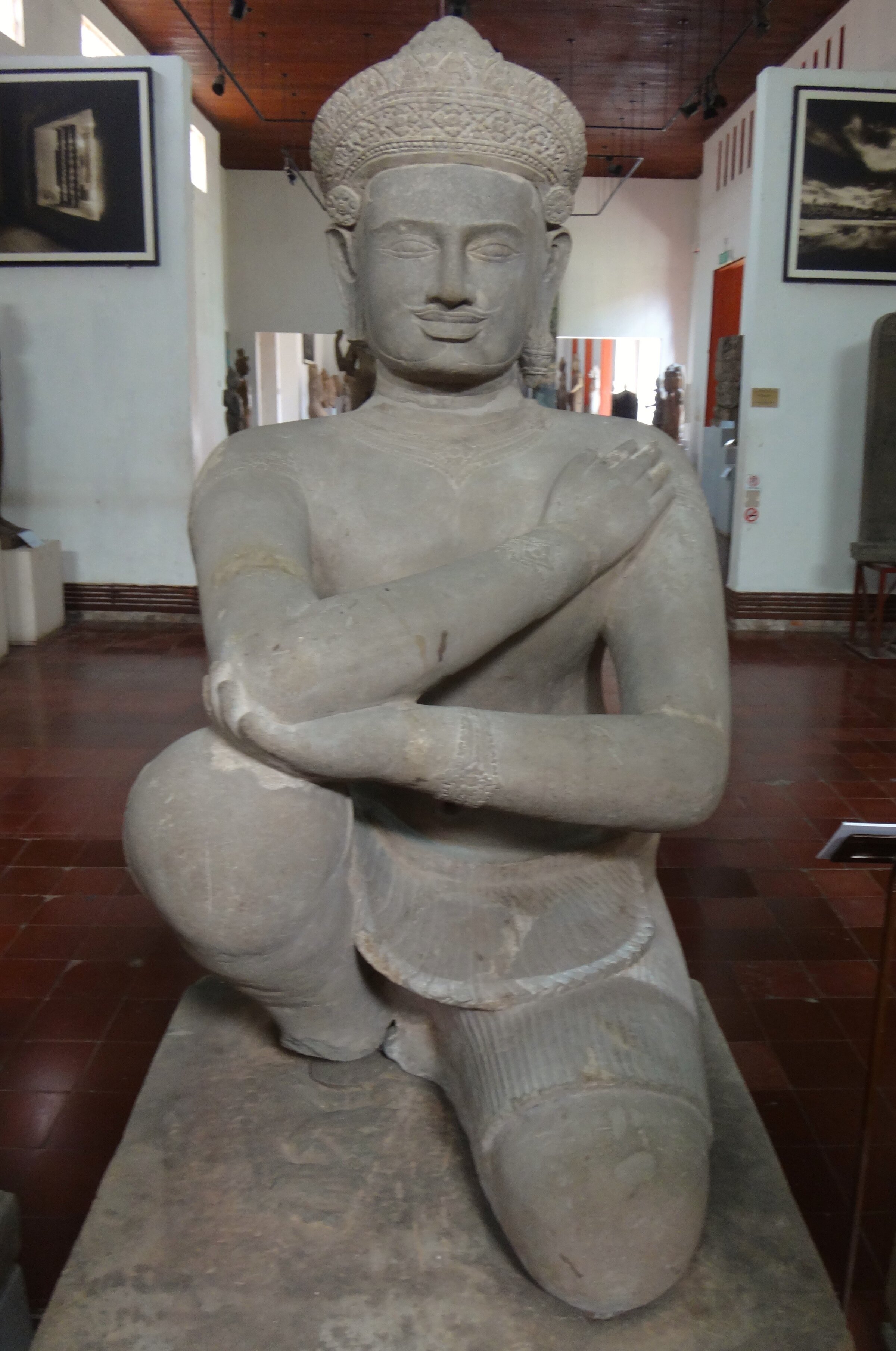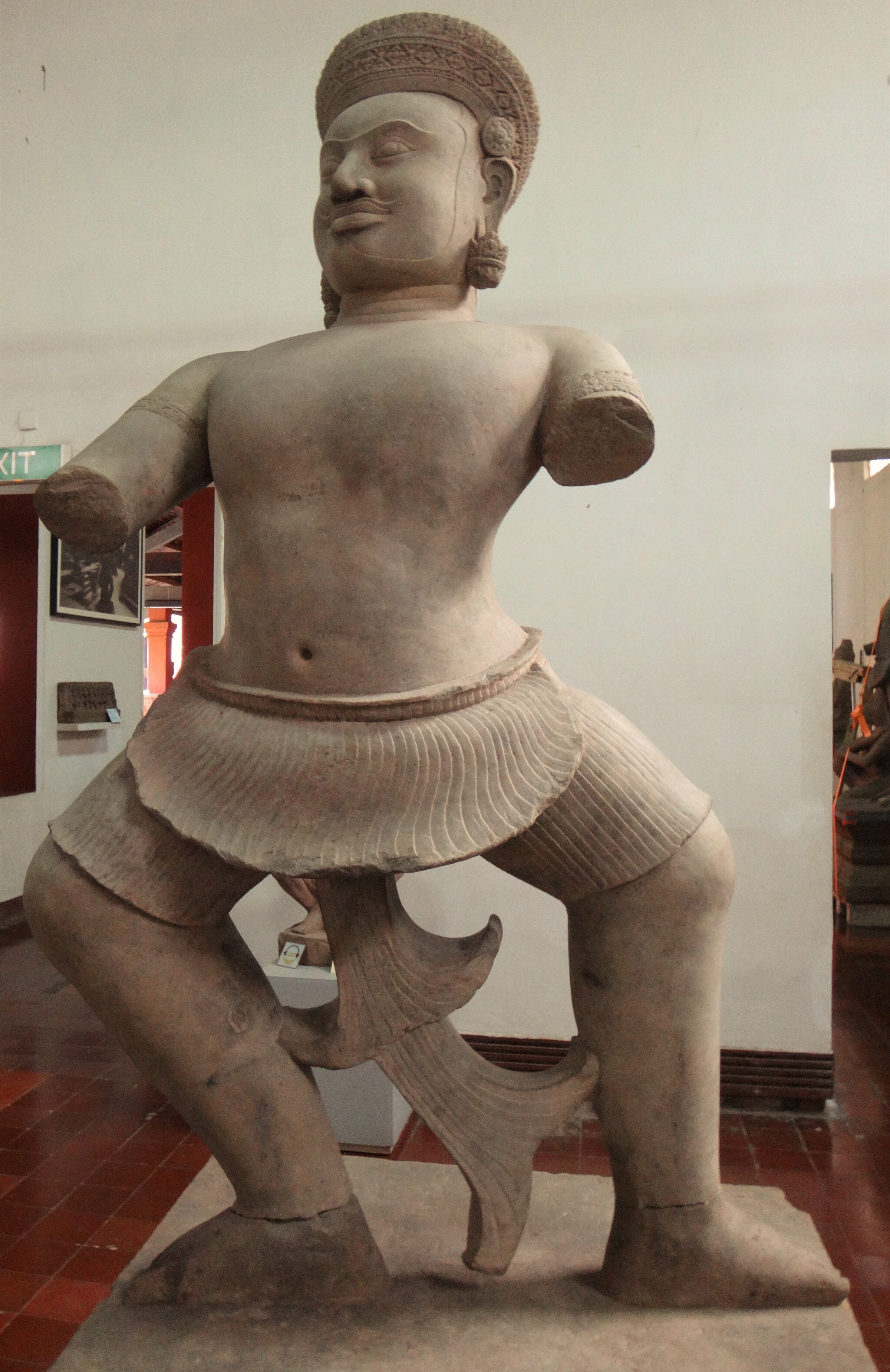The Battle of Bhima versus Duryodhana – Prasat Chen, Koh Ker
by Andy Brouwer
Entry #6 in Khmer Art Collection
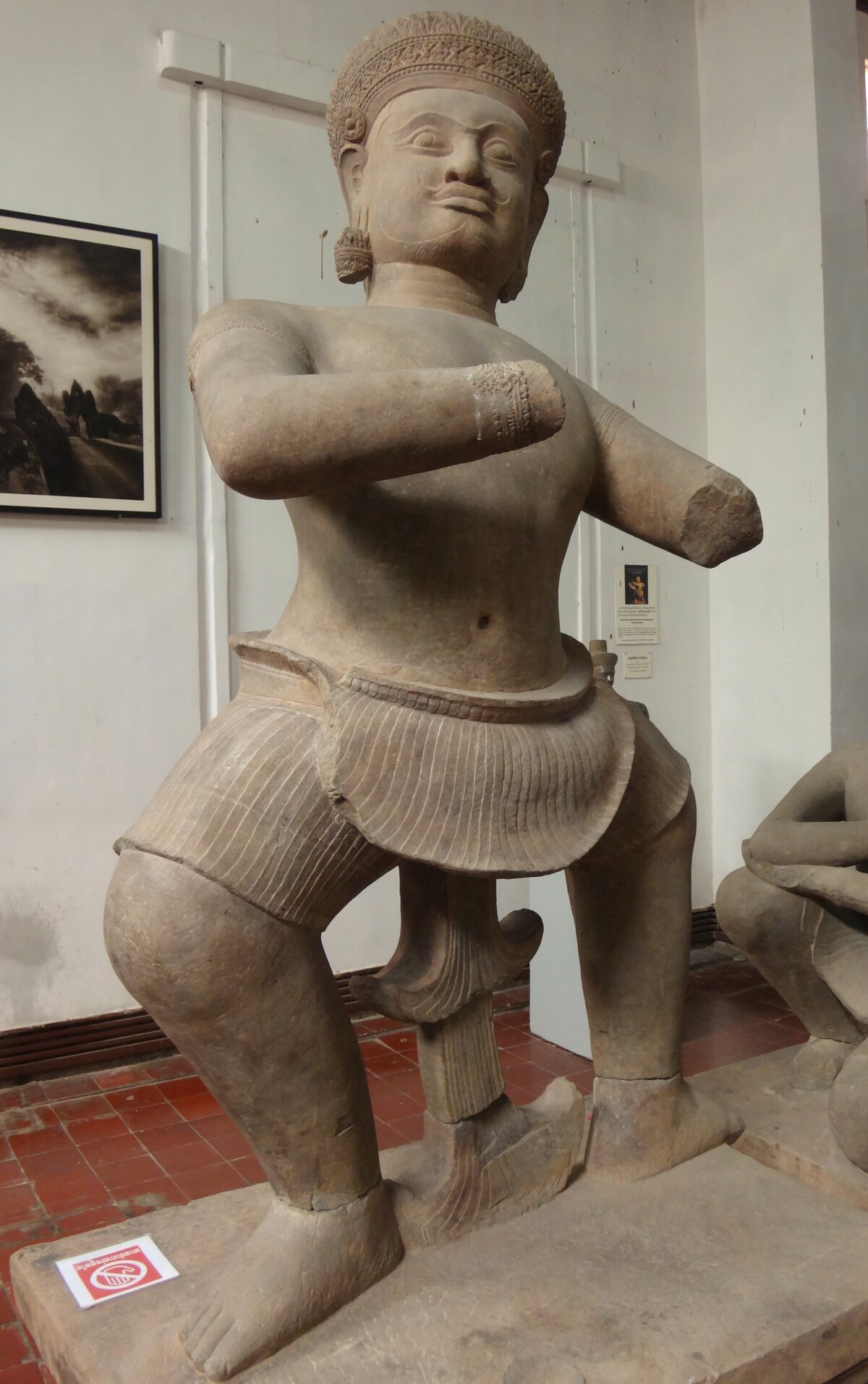
Published: October 25th, 2021
Author: Andy Brouwer
- 10th century
- Provenance: Prasat Chen, Koh Ker, Preah Vihear Province
- Location: National Museum of Cambodia, Phnom Penh
- Catalogue Numbers: NMC Inventory & Height: Bhima - NMC.149 (236cm), Duryodhama - NMC.150 (234cm), Balarama - NMC.151 (174cm), Nakula - NMC.70 (170cm), Sahadeva - NMC.71 (175cm), Yudhisthira - NMC.256 (125cm). Sandstone
- Status: Returned 2013-2014 - On display
- Photo credits: Andy Brouwer
We step back in time to the 10th century, as a battle to the death played out in the entrance hall to the temple, Prasat Chen, when the complex of Koh Ker was the capital city of the Khmer kingdom for a brief twenty-year period under King Jayavarman IV. Undisturbed for more than 1,000 years, all that changed in 1972 when looters plundered the temples, hacking these massive statues from their pedestals and whisking them away under cover of darkness.
Through an elaborate chain of dealers, brokers and buyers, they ended up in museums and private collections in the United States. That is until today, when six of the statues are back on home territory and proudly on display in the National Museum in the capital, Phnom Penh.
In the intervening fifty years since the statues disappeared, many more battles ensued as the Cambodian authorities fought to repatriate the treasures of Koh Ker. The original battle was between the mythical warriors Bhima and Duryodhana, described in the epic Hindu story, the Mahabharata, and surrounded by a supporting cast of characters, each with their own story to tell. Originally, there were nine beautifully sculpted and larger-than-life statues that occupied the intimate temple space. Today, the museum has recovered six of the works of art, with the remaining three most likely in private collections far from prying eyes.
The first to be returned home arrived in June 2013, when New York’s Metropolitan Museum of Art voluntarily returned two of the statues, the Pandava Twins – Nakula and Sahadeva - to Phnom Penh, to be reunited with a third, headless, brother named Yudhisthira, at the museum. The pedestals of all three statues had been left inside the temple, when the thieves had hacked the torsos from their plinths. That also applied to Balarama, an avatar of the god Vishnu, who had been spirited away overseas and been sold twice by the auctioneers Christie’s before they realized it belonged to Cambodia and was voluntarily returned home in 2014.
The final two pieces of the puzzle came back to Cambodia amidst great fanfare in June 2014. The two mighty warriors were back home. Duryodhana’s latest battle involved the US Department of Justice and international auction house Sotheby’s, who finally agreed to voluntarily return the statue to Cambodia. For the historic victor, Bhima, another of the Pandava brothers, the Norton Simon Museum in California also consented to repatriate the sculpture. However, still missing from the reunion – which is gloriously captured in a beautiful pink sandstone pediment from the temple of Banteay Srei that the museum has on display overlooking the tableau below – is another Pandava brother, Arjuna, and Krishna, the younger brother of Balarama, and Dhrishtadyumna, commander of the Pandava army.
Today, in the National Museum’s public display, the conservation team have reattached Duryodhana and Bhima to their feet. They have taken their respective places at the center of this spectacle, opposite each other and ready to do battle once again. It is nothing short of remarkable that six of these majestic sculptures have found their way home. They were revolutionary for their time, the first free-standing, dynamic figures in classical Khmer art. Make sure you visit the National Museum soon to witness this amazing scene for yourself.
Tags: Bhima, Duryodhana, Koh Ker style, Khmer sculpture, museums, National Museum of Cambodia
About the Author

Andy Brouwer
Cheltenham-born and bred, Andy Brouwer (1959, UK) made his first trip to Cambodia in 1994, and that white-knuckle ride hooked him for life. He upped sticks to Phnom Penh in 2007 after more than thirty years in banking back in the UK to join Hanuman Films.
As well as having a serious obsession in temples, books -- he’s the editor of the guidebook To Cambodia With Love --, and pretty much all things Khmer, he is a lifetime supporter of Leeds United and has an insatiable passion for the music of Steel Pulse and Ennio Morricone. His website relives his numerous visits to Cambodia, and more.
During his time living in Cambodia, he’s been a producer and researcher for Hanuman Films, a product manager at Hanuman Travel, and the media officer with Phnom Penh Crown FC. Since 2020, he developed a personal research, Exploring Khmer Art Worldwide, published as an ongoing series on his Facebook page, that will be soon hosted on Angkor Database.


